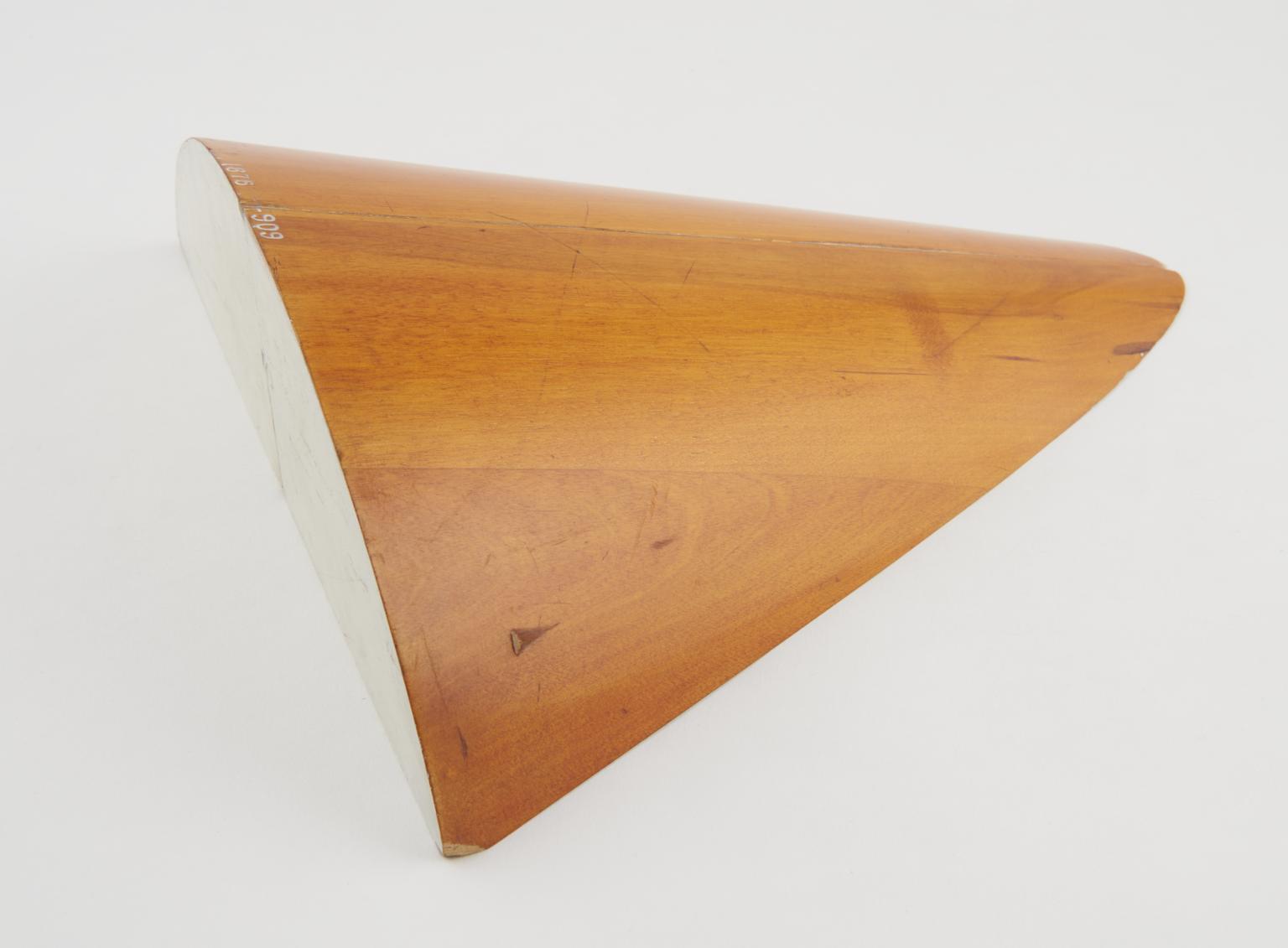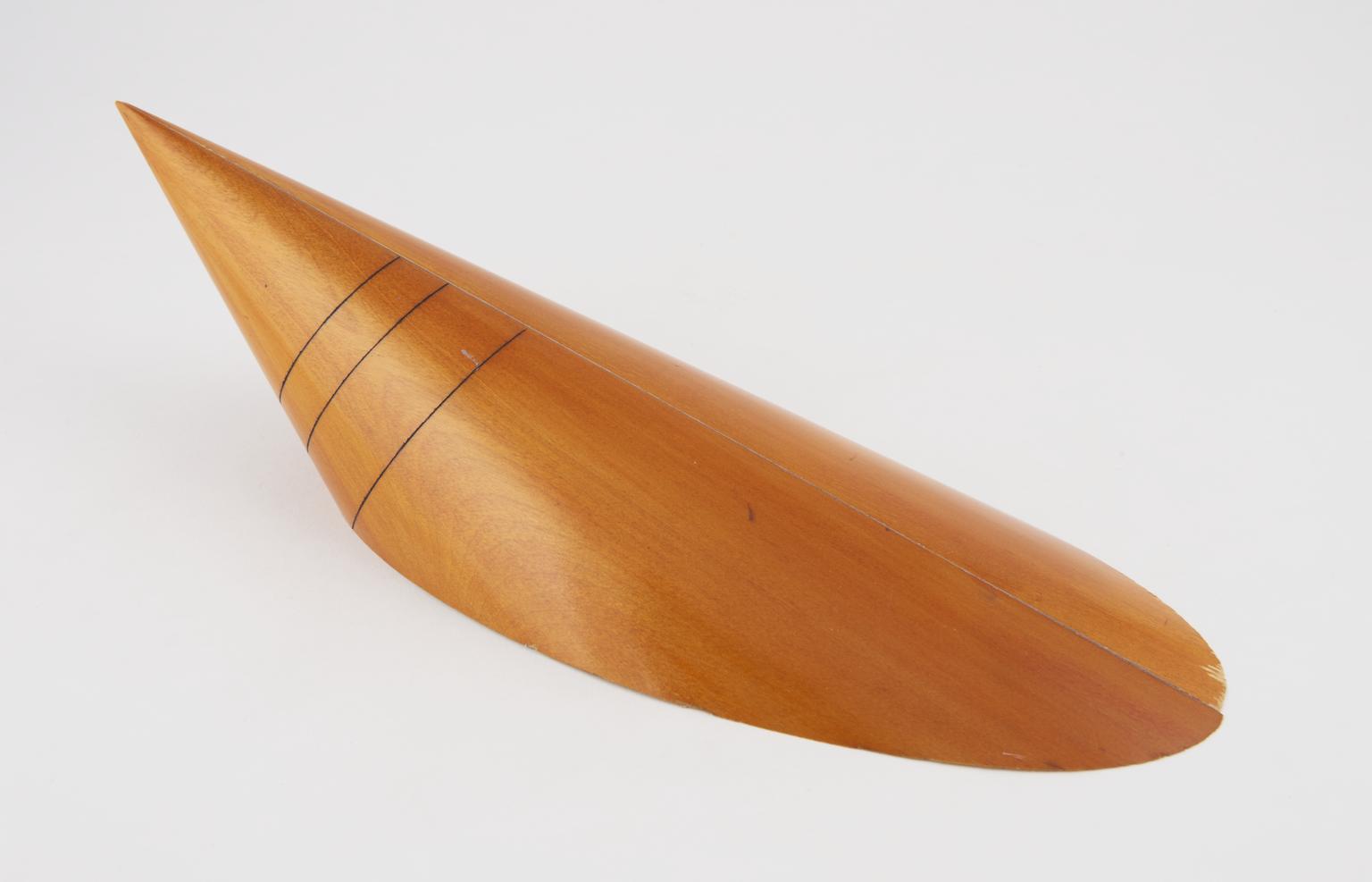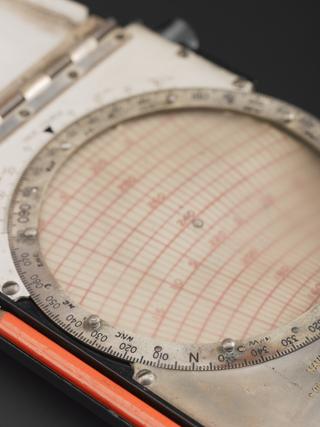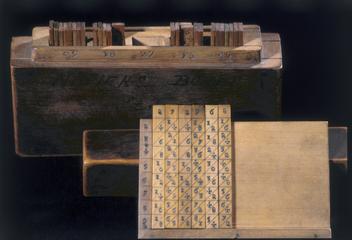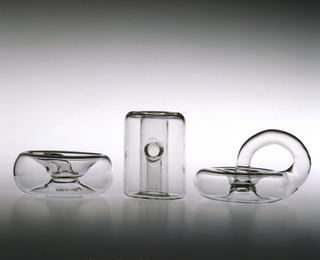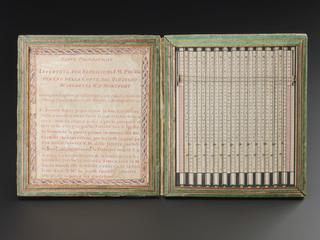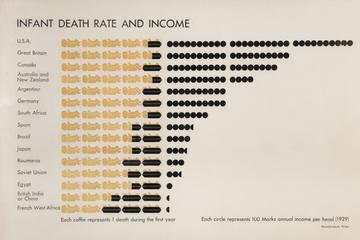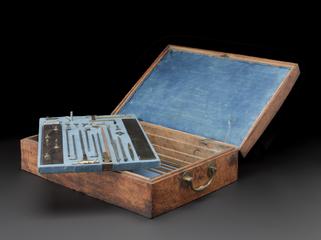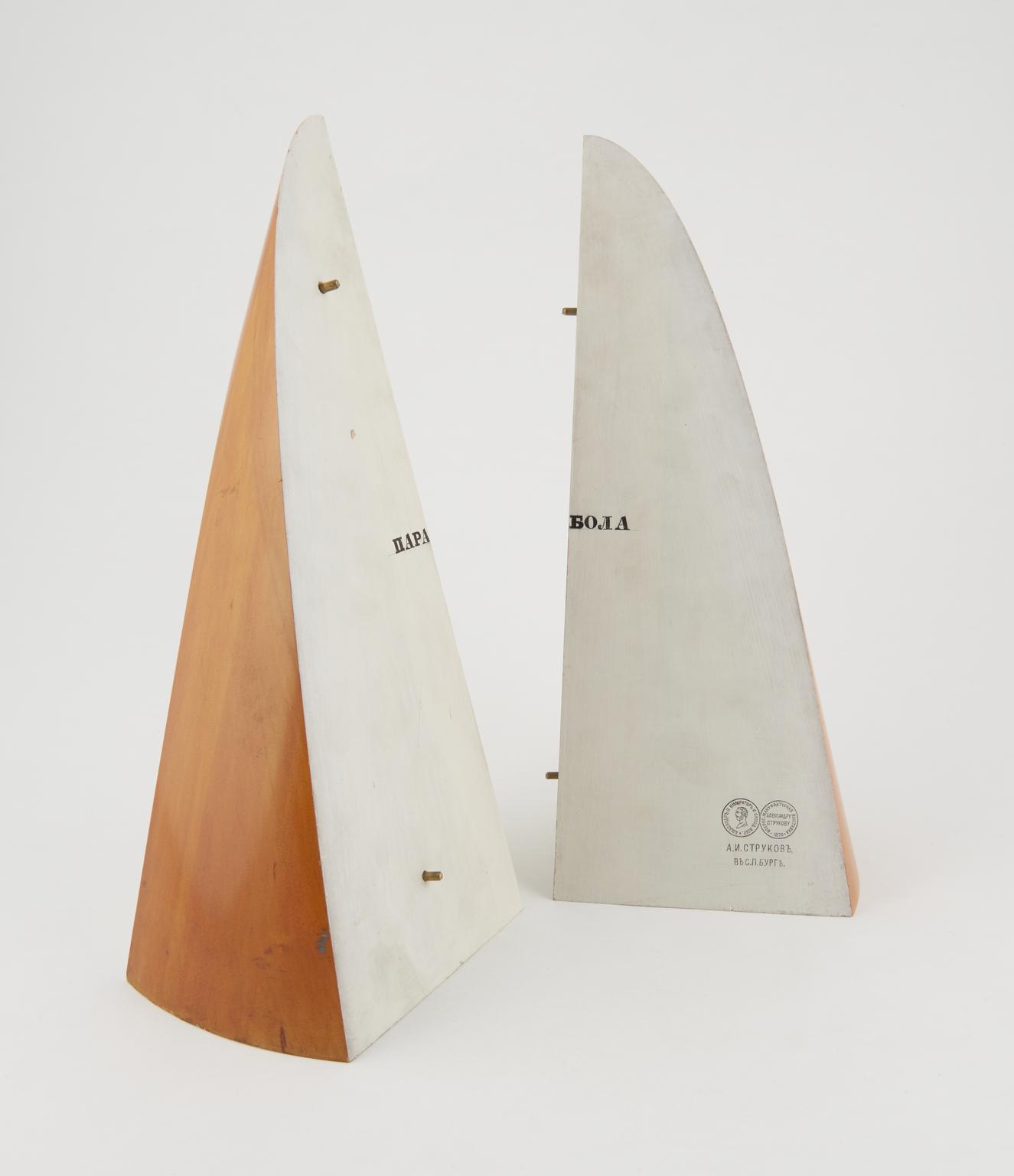
two parts of a wooden disected cone
Two parts of a diescted cone, with Russian writing across the middle. Two dowels on each one. They have a white flat edge and the curved edges are wood. One of these has a stamp and some writing on. This cone is a dissected and from St Petersburg, made in 1876.
- Materials:
- wood (unidentified) and metal (unknown)
- Object Number:
- 1876-909/1
- type:
- cone
- Image ©
- The Board of Trustees of the Science Museum






